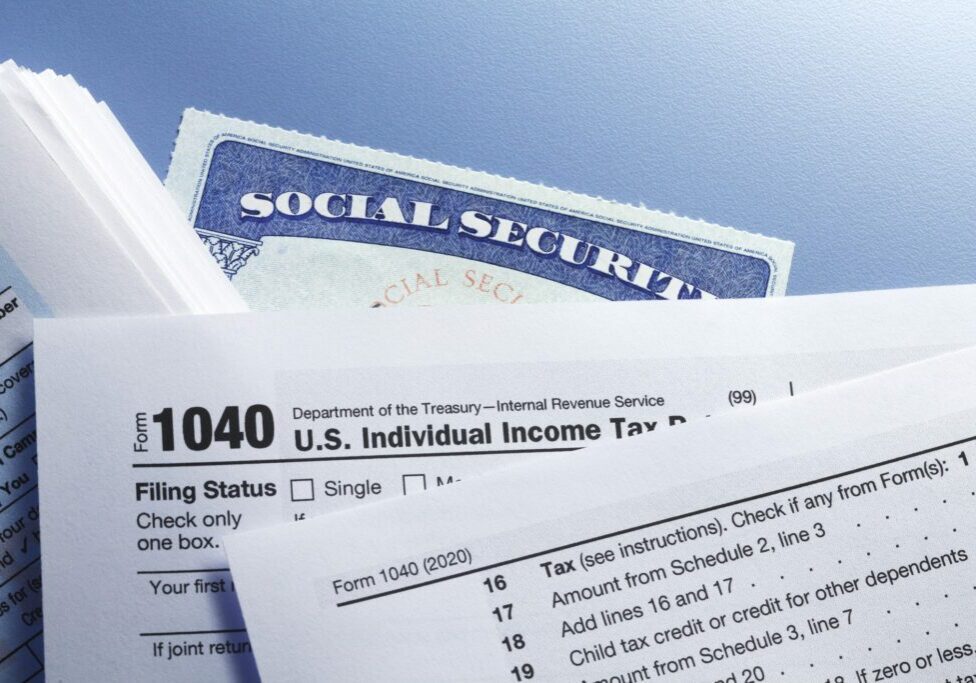Top 1040 Filing Mistakes
As the tax filing deadline approaches and stress levels of taxpayers rise, it’s important to take time to reflect on common 1040 filing mistakes to help ensure that your return isn’t one with errors that slow down a refund or possibly leads to unnecessary tax being paid to the IRS.
- Math Errors – Transposing numbers when entering information or arithmetic mistakes is one of the most frequent mistakes made on a tax return. Most professional tax preparers perform some type of reconciliation process that should catch transpositions and addition or subtraction errors, but if you’re self-filing your return be sure to double-check the numbers you’re inputting into your tax preparation software and be especially careful if you’re filing a paper rather than electronic tax return.
- Names not matching Social Security number information – The names on tax returns are matched with Social Security Administration (SSA) records. If a name on a tax return does not agree with SSA, the tax return will be rejected. If you changed your name (usually due to marriage or divorce) during the year but did not update SSA with the information, don’t panic; file your tax return using your prior name. If you misspell your name on your tax return, the return will be rejected by the IRS; double check the spelling of your name prior to filing your return to eliminate the possibility of your return being rejected due to a typing mistake.
- Filing status mistakes – make sure you choose the correct filing status for your return. Filing statuses are: single, married filing jointly, head of household, qualifying widower, married filing separately – itemized, married filing separately – not itemized, married filing separately – spouse not filing.
- Filing status does make a difference. Choosing single when head of household or qualifying widower is the correct choice can make a significant difference (increase) in the tax calculated. Make sure you understand which filing status is the proper one for you.
- Claiming ineligible dependents or not claiming eligible dependents – an eligible dependent is either a qualifying child or a qualifying relative. The dependency tests are specific. A qualifying child can be the taxpayer’s son or daughter, stepson or stepdaughter, brother, sister, stepbrother, stepsister, or any descendent of any such individual. That’s right, your brother can be your child for purposes of a dependency exemption. A qualifying relative does not have to be related, if his or her personal residence was the taxpayer’s home and is a member of the taxpayer’s household for the entire year. Certain age, support, and residency tests do apply when determining who qualifies as an eligible dependent.
- Claiming a dependent when it makes sense for the dependent to claim himself/herself – if you have a child in college and your taxable income is too high for you to claim education credits for tuition you paid and your child has taxable income to use the education credit, it may be beneficial from an overall tax standpoint to have your child claim his or her own personal exemption.
- Choosing between the higher education credit and the deduction for eligible college expenses – there are higher education tax credits and higher education tax deductions. The impact of the deduction is higher as your marginal tax bracket increases, while the value of the credit is the same no matter which tax bracket you are in. There are income phase-outs for both the credit and the deduction, but if you qualify, be sure to analyze whether the credit or the deduction has the greatest impact on your return.
- Leaving off income – wait to file your tax return until you’ve received all of your tax documentation or if you just don’t receive the official tax form and the income is taxable, report the income anyway. You will get a notice from the IRS, and possibly incur interest and penalties, if you earned income that was reported to the IRS and you left it off your return.
- Direct deposit of refund, incorrect bank account information – verify your bank account information and routing number. Your refund will be delayed if your bank account information is not correct.
- Not following up on a tax refund – if you would like to monitor the status of your refund, the IRS website: www.irs.gov/Refunds is the site. You can begin monitoring the status of your refund within 24 hours of electronically filing your tax return, or 4 weeks after mailing a paper return. Refunds are usually issued within 21 days of the IRS receiving your tax return. If you don’t receive it, you’ll need to follow up.
- Not making an IRA contribution for a spouse that doesn’t work – generally, you must have earned income or wages to make an IRA contribution. But, if one spouse doesn’t have any earned income and the other does, the non-working spouse may be able to make a deductible IRA contribution of up to $5,500 or $6,500 if he or she is at least 50 years old, subject to adjusted gross income limitations.
- Not backing out of an IRA conversion – if you converted a traditional IRA to a Roth IRA in 2014, you planned on paying the income tax on the conversion with your 2014 tax filing. But, if circumstances changed and your taxable income is higher in 2014 than you expected you may find it beneficial to undo the Roth IRA conversion. By eliminating the taxable income from the Roth conversion, you may elude the higher tax bracket and/or maintain your adjusted gross level at a point that you don’t lose any tax breaks (such as the education credit).
The above list by no means covers every error made on an income tax return. As always, if you have questions consult a tax adviser before filing your income tax return.
Sue Price-Scott, CPA is a partner at Alegria & Company and specializes in business and personal income tax and is accredited in business valuation.
She can be reached at spricescott@alegriacpas.com








